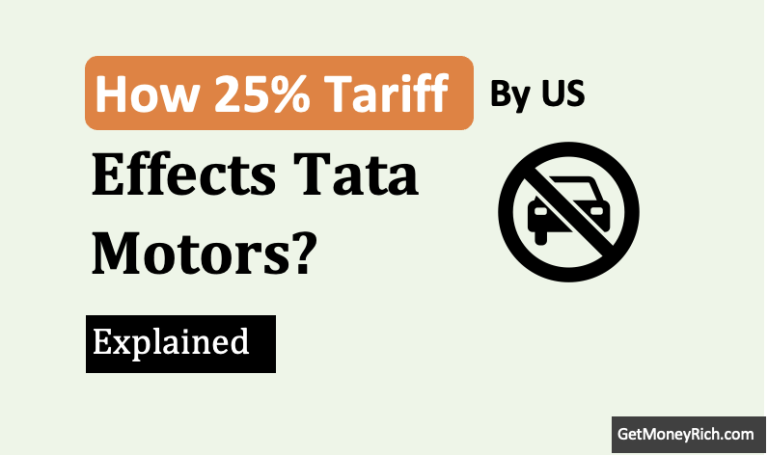Raymond Share History (Last 5 Years)
Demerger Impact Simulator
Understand how a corporate demerger can reshape a company’s stock valuation.
*This is the portion of the original company’s TTM EPS now attributed to the new demerged entity’s financials.
Introduction
I've been keeping an eye on the stock market. Recently, something about Raymond (NSE:RAYMOND) caught my attention. Honestly, it left me a bit confused. For quick answers, check the FAQs.
You see, I was looking at their financial numbers. Some popular portals were showing a really low P/E ratio. Others showed a very high one.
And then there was this huge difference in their Basic EPS and Diluted EPS.
One was Rs. 1995/share, and the other was Rs. 19.89/share. Confusing, right?
I thought, "What is actually going on here?" So, I decided to dig deeper.
Let me share what I found.
Raymond's Big Transformation
First, we need to understand something important about Raymond. This company, which we all know for its textiles, has been going through a major change.
They are restructuring their business.
Last year, they spun off their lifestyle business, Raymond Lifestyle. It became a separate listed entity in September 2024.
More recently, their real estate arm, Raymond Realty, also demerged.
It became a standalone listed company on May 1, 2025. If you held Raymond shares, you received one share of Raymond Realty for every share you owned.
So, what's left of the original Raymond Ltd.? It's now primarily focused on its engineering business.
This is a big shift.
It means we can't compare its current numbers directly with its past performance which was a mix of a diversified business.
Basic EPS vs. Diluted EPS
Before we tackle the numbers, let's quickly understand EPS.
EPS, or Earnings Per Share, tells us how much profit a company makes for each share. It's a key figure for investors.
There are two main types:
- Basic EPS: It is straightforward. It's the company's profit divided by the total number of shares currently out there. Simple, right?
- Diluted EPS: But then there's Diluted EPS. This one is a bit more cautious. It considers all those "potential" shares that might come into existence later. Think of things like employee stock options or convertible bonds. If these get converted into regular shares, the total number of shares goes up. This would naturally spread the same profit over more shares, making the EPS lower.
That's why Diluted EPS is almost always lower than Basic EPS, and many analysts prefer it for a more realistic picture.
The Great EPS Mystery
Now, let's get to the heart of the confusion.
I saw Moneycontrol reporting Raymond's basic EPS for Q4 FY25 as Rs. 1995/share, but its diluted EPS as Rs. 19.89/share. That's a massive difference. That's very confusing.
My first thought was, "Is this a typo?"
So, I checked the company's latest consolidated net profit for Q4 FY25. It was Rs. 132.76 crore. Then, I looked at the number of outstanding shares, which is around 66.55 million.
If you do the math, Rs. 132.76 crore (PAT) divided by 66.55 million shares, you get approximately Rs. 19.95 per share (EPS).
See? This calculated figure is almost exactly the same as the reported diluted EPS of Rs. 19.89.
This strongly suggests that the Rs. 1995 basic EPS figure is simply an error in reporting. It's likely a leftover from the old, consolidated numbers, or perhaps a miscalculation related to the demerged businesses.
Financial reporting during demergers can be quite complex, with companies separating "continuing" and "discontinued" operations.
So, the Rs. 19.89 (or Rs. 19.95) diluted EPS for Q4 FY25 is the correct quarterly earnings per share for the current Raymond Ltd.
What About the P/E Ratio?
The P/E ratio, or Price-to-Earnings ratio, is calculated by dividing the current share price by the EPS. It helps us understand if a stock is expensive or cheap.
Raymond's current share price is around Rs. 617.30.
If we use the correct Q4 FY25 diluted EPS of Rs. 19.89, the P/E ratio comes out to roughly 31.04x (617.30 / 19.89).
For a broader, annual view, we often look at Trailing Twelve Months (TTM) EPS. Several financial platforms report Raymond's TTM EPS as Rs. 7.17. Using this, the P/E ratio is about 86.09x (617.30 / 7.17). This higher P/E of around 86x is what many sources are showing for the post-demerger Raymond.
Now, about that "very low P/E" of 0.54x that some portals showed.
This was based on a TTM EPS of Rs. 1,146.30. This figure is clearly inflated. It likely includes one-time gains or old data from the demerged businesses.
If you used that, the stock would look unbelievably cheap, which is simply not true.
Conclusion
This whole Raymond EPS and P/E confusion is a great lesson for all of us retail investors.
- Always Double-Check: Never take a single financial figure at face value, especially when a company is undergoing major changes like demergers. Cross-verify with multiple reliable sources and, if possible, the company's official investor relations section on their website.
- Understand the Context: Raymond is no longer the diversified conglomerate it once was. It's now focused on its engineering business. Its financial performance and valuation should be viewed through this new lens.
- Focus on "Continuing Operations": When looking at financial reports, pay attention to figures that specifically relate to the "continuing operations" of the company. This gives you the clearest picture of the core business going forward.
The P/E of around 86x for Raymond (NSE:RAYMOND) suggests a high valuation. This could mean the market has high hopes for its engineering business. Or, it might mean the stock is a bit expensive right now.
May I ask you to use the "Demerger Impact Simulator" tool now for better clarity of the concept.
Have a happy investing.
FAQs
Raymond Ltd. undertook demergers as a strategic move to unlock shareholder value and streamline its operations. This corporate action aims to create more focused and potentially higher-valued standalone entities.
Raymond Ltd. spun off its lifestyle business, Raymond Lifestyle, which was listed as a separate entity in September 2024. This was followed by the demerger of its real estate arm, Raymond Realty Limited, which became a standalone listed company on May 1, 2025.
Following the demergers, the parent entity, Raymond Ltd., is now primarily focused on its engineering business. This represents a significant shift from its historical diversified conglomerate structure.
The demergers have fundamentally reshaped Raymond Ltd.'s financial profile. Consequently, historical consolidated financial data, which included the demerged lifestyle and real estate segments, may not accurately represent the current operational and financial profile of Raymond Ltd.. Investors must analyze the company based on its new business model.
The wide range of reported EPS figures (e.g., the reported Rs. 1995 basic EPS versus the calculated Rs. 19.95) is a direct result of the complex accounting treatment of demergers, involving the segregation of "continuing" versus "discontinued" operations, and the varying timeliness of data updates by financial aggregators. The Rs. 1995 basic EPS figure is an anomaly, likely a data entry error or misinterpretation.
For the quarter ended March 31, 2025 (Q4 FY25), the accurate diluted EPS for Raymond Ltd. is Rs. 19.89 (which aligns closely with the calculated basic EPS of Rs. 19.95). For a more comprehensive annual view, the Trailing Twelve Months (TTM) EPS of Rs. 7.17 is considered the most appropriate figure for P/E calculations, reflecting the normalized earnings of continuing operations.
Using the TTM EPS of Rs. 7.17, Raymond Ltd.'s "actual" P/E ratio is approximately 86.09x. This is considered a high valuation multiple, which could indicate strong market expectations for future growth in its focused engineering business or might suggest the stock is currently trading at a premium relative to its present earnings.






